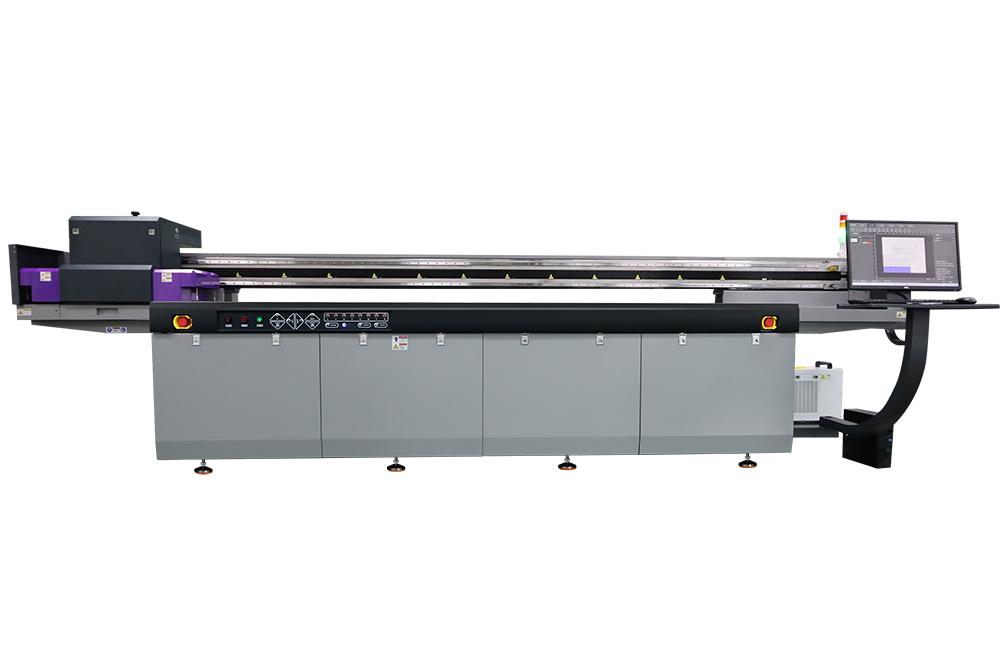What Is the Role of Pre-Press Workflow in UV Flatbed Printing?
What Is the Role of Pre-Press Workflow in UV Flatbed Printing?
UV flatbed printing has revolutionized the way we approach large-format, high-quality graphic production. This technology allows for direct printing onto a variety of substrates, including rigid materials such as glass, metal, plastic, and even some textiles, making it a versatile choice for a wide range of applications from signage to industrial printing. However, the success and efficiency of UV flatbed printing are heavily reliant on a well-executed pre-press workflow. In this article, we will delve into the specifics of the pre-press workflow for UV flatbed printing, exploring its key components, the importance of each step, and how they contribute to the overall quality and effectiveness of the final print.

Understanding Pre-Press Workflow
Pre-press workflow refers to the series of steps that occur before the actual printing process begins. It involves preparing the digital file for printing, ensuring that it meets the technical requirements of the printing press, and optimizing it for the best possible output. In UV flatbed printing, this workflow is crucial as it sets the foundation for a seamless and efficient production process.
1. File Preparation and Inspection
The first step in the pre-press workflow is file preparation and inspection. This involves receiving the digital file from the client or designer and thoroughly reviewing it for any potential issues. Key aspects to check include file format, resolution, color mode, and bleeds. UV flatbed printers typically require high-resolution files, preferably in vector format, to ensure crisp and clear prints. Additionally, files must be in CMYK color mode to match the printer’s ink system. Bleeds, which are areas of the design that extend beyond the final trim size, are also crucial for ensuring that no unprinted edges are visible on the final product.
2. Color Management
Color management is a vital part of the pre-press workflow, especially in UV flatbed printing where color accuracy is paramount. This step involves adjusting the colors in the digital file to match the specific color profile of the printer. UV printers use a different ink set and printing process compared to traditional offset or digital presses, which means colors can appear differently on the substrate. By using color profiles and calibration tools, pre-press technicians can ensure that the colors in the final print match the designer’s intent as closely as possible.
3. File Optimization
Once the file has been inspected and color-corrected, it’s time for optimization. This step involves adjusting the file settings to maximize print quality and minimize production time. This may include resizing the file to fit the print bed, adjusting the print resolution, and optimizing the ink coverage to prevent over-saturation or ink bleeding. File optimization also involves trapping, which is the process of adjusting overlapping colors to ensure that they print correctly without any gaps or misalignments.
4. Proofing and Approval
Before sending the file to the printer, it’s essential to create a proof for the client to review and approve. A proof is a simulated representation of the final print, which allows the client to see how the design will look on the chosen substrate. This step is crucial for ensuring that the client is satisfied with the design and that any necessary changes are made before the printing process begins. Once the proof is approved, the file is ready for printing.
5. Print Preparation
The final step in the pre-press workflow is print preparation. This involves loading the digital file into the printer’s software, adjusting the printer settings to match the specific job requirements, and preparing the substrate for printing. UV flatbed printers require specific calibration and setup to ensure optimal print quality, including adjusting the print head height, ink flow, and curing temperature. Additionally, the substrate must be properly cleaned and prepared to ensure that the ink adheres correctly and that the print is durable.
The Importance of Pre-Press Workflow in UV Flatbed Printing
A well-executed pre-press workflow is essential for achieving high-quality results in UV flatbed printing. By thoroughly preparing and optimizing the digital file, pre-press technicians can minimize the risk of errors, reduce production time, and ensure that the final print meets the client’s expectations. Here are some key reasons why pre-press workflow is crucial in UV flatbed printing:
Quality Control: A thorough pre-press workflow ensures that the digital file is optimized for the specific requirements of UV flatbed printing, resulting in high-quality prints with accurate colors and crisp details.
Efficiency: By identifying and addressing potential issues before the printing process begins, pre-press workflow helps to streamline production and minimize downtime.
Cost-Effectiveness: Proper file preparation and optimization can help to reduce ink usage, prevent waste, and minimize the need for reprints, ultimately saving time and money.
Client Satisfaction: By providing accurate proofs and ensuring that the final print meets the client’s expectations, pre-press workflow plays a critical role in maintaining client satisfaction and building long-term relationships.
Conclusion
In conclusion, the pre-press workflow is a vital component of UV flatbed printing, playing a crucial role in ensuring high-quality, efficient, and cost-effective production. By thoroughly preparing and optimizing the digital file, pre-press technicians can minimize the risk of errors, streamline production, and ensure that the final print meets the client’s expectations. As UV flatbed printing continues to evolve and gain popularity, the importance of a well-executed pre-press workflow will only continue to grow.
